|
Join Butterfly Conservation here and help us protect Sussex's amazing butterflies and moths |
Monday 28 February 2011
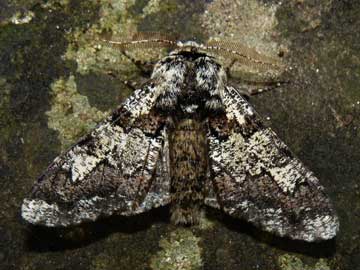
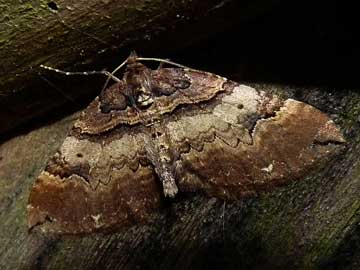
I was at Eridge station again today and found another 3 spring spp, Small Quaker, Oak Beauty (above, left) and Shoulder Stripe (above, right) the latter two I thought were quite beautifully marked. (Richard Roebuck)
News for Thursday 24 February: At midday in bright sunshine, I also saw my first butterfly of the year, a male Brimstone in my garden in Graffham near Midhurst, West Sussex. (Dianne Hardcastle)
Sunday 27 February 2011
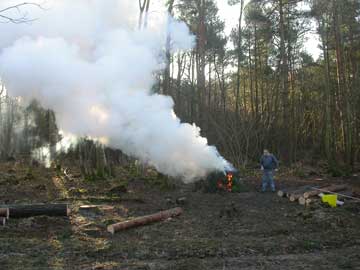

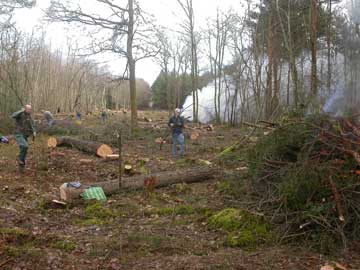
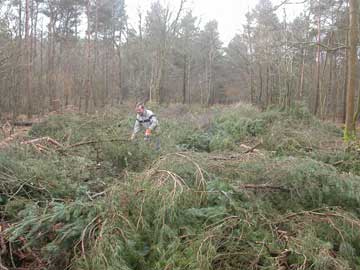
Today another group of Sussex BC volunteers joined Dave and I in Rowland Wood as we continued our onslaught against the sea of conifer brash which is covering the floor along the new ride. We had two fires on the go today and we chopped, dragged and burnt our way along the ride - almost making it to the end. The promised sun (and the hoped-for Brimstones) failed to materialise - but a Great Crested Newt put in an appearance as it slithered back to the pond. My baked potatoes just keep getting better and in keeping with the new tradition that I am trying to establish Barbara supplied us all with this weeks treats - florentine biscuits. Thankyou to all our volunteers for putting in so much effort today; Caroline Clarke, Peter Atkinson, Dave Mitchell, Graham Parris, Bob Eade, Sherie New, Carole Kemp, Nigel Kemp, Richard Roebuck, Keith Alexander, Andrew Burns, Barbara Woods, Susan Suleski and Neil Hulme. We will be back on the reserve next Sunday - we've still got a lot to do and only two more work parties left - please consider joining us for a few hours - your help will be much appreciated (MIchael Blencowe)
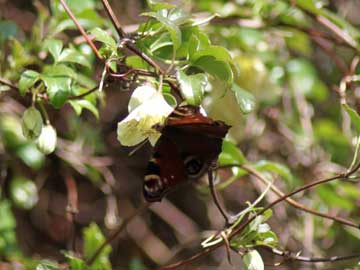
Nectaring Peacock (above), Storrington, Thursday 24 February (Martin Kalaher).
Saturday 26 February 2011
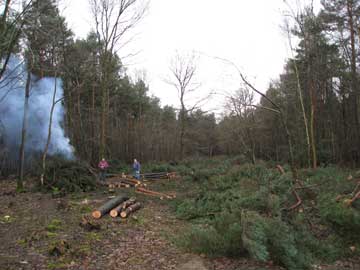
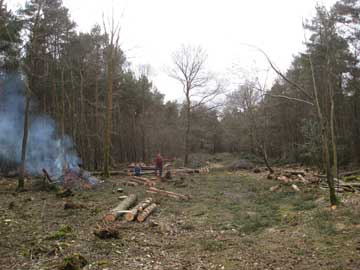
Held an impromptu work-party in Rowland Wood today. After a stressful week at work I just wanted to get out in the woods and burn something! I was joined by Dave Mitchell and Colin Knight and between us we managed to clear quite a chunk from the sea of conifer branches that lay on the ground. Dave reported that he saw a new bird species for the reserve last week - a Peregrine flying through one of our newly created rides. After we had cleared up Colin took me on my first metal detecting experience. We scoured the rides of Rowland Wood looking for archaeological items. Our haul was 2 shotgun cartridges, a nail, a piece of tin foil and a 5p piece (which I had probably dropped there last year). Thanks to Dave and Colin for their help (Michael Blencowe)
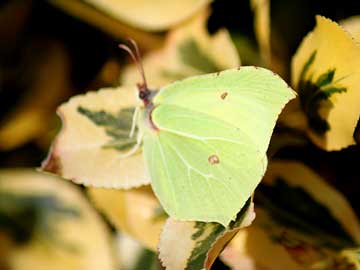
Brimstone (above) photographed by Martin Kalaher in his Storrington Garden, Thursday 24 February.
Friday 25 February 2011
2 or 3 Brimstone about yesterday (24th) in the warm sunshine, and this morning there were about 40 moths of 7 species in the trap - mostly Small Quakers, Common Quakers, Small Brindled Beauties and Oak Beauties, plus March Moth, Satellite, Chestnut. (Pete Hughes, RSPB Pulborough Brooks)
News for Thursday 24 February: One male Brimstone, Plaistow village, TQ 005307. (Margaret Hibbard)
More news for Thursday 24 February: This morning at Stansted Forest (SU748110) during an hour and a half walk around the woods where the temperature was 12\B0C, the following were seen; Brimstone (5M 1F) - very active and a single Red Admiral. (Roy Symonds)
...and a little more: I saw a Red Admiral in the warm sunshine on Thursday - my first butterfly of the year! It was at Lewes Cemetery. I would have run after it but I was attending a burial at the time. (Steven Teale)
Thursday 24 February 2011
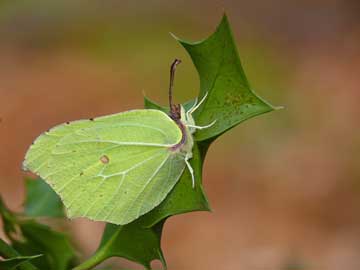
My first butterfly of the year; a male Brimstone at Rewell Wood. I later dropped in to see Major Reg Trench, who has kindly donated some books to the Spring Social raffle. Reg had also seen a Brimstone in his Amberley garden. (Neil Hulme)
Whilst in a client's house today at 11:15 am in Mannings Heath a few miles South east of Horsham I saw a large rhapsody in lime green in the bright sunshine flying a few yards high past the garden. I fancy it was a Brimstone and lifted my spirits considerably for the coming season! No picture, sorry, but very many flowering Crocii in the gardens and also some just flowering Daffs.
Not only but also...
My colleague has just described a large yellow butterfly in the sun outside our offices in Horsham Northstreet. Sounds like another Brimstone! They must be hatching yet it was horrible weather yesterday, rain all day. Our cup overfloweth! (John Coxon)
This morning I noticed a Brimstone in flight in my garden at Willingdon Road, Eastbourne. (Douglas Neve)
On a lovely sunny day my first butterfly this year, a male Brimstone flying through Henfield (Richard Roebuck)
While out and about this morning studying the finer points of habitat management planning at Plumpton College, I was chuffed to discover a Brown Hairstreak egg on a sucker at the base of a south facing, sheltered blackthorn hedge (TQ356146). After pointing it out to my fellow students another was quickly found a little further along the hedge by Mark Davis, this one was a little higher and within the main body of the hedge rather than on a sucker. Having spent a fair bit of time recently examining the hedges on the estate with no luck, it was particularly satisfying, on such a fine morning, to finally get a positive result. Hopefully the discovery will be taken into consideration when these hedges are managed in the future. (Bob Foreman)
My first sighting of the year on a glorious sunny day, a male Brimstone near Slaugham Pound, Handcross. Spring is just around the corner, a few honeybees nectaring upon crocus. (David Pyle)
Is spring on the way? I saw my first yellow Brimstone butterfly this morning in my garden in Arundel. I would like to know if any others have been seen yet. (Ruth Davis)
It's always good to get the 'show on the road' and I was delighted to see a male Brimstone in my Storrington garden today. It hung around for a couple of hours or so but it's flight time was probably no more than 1-2 minutes. Brimstones are fairly common in my garden but they rarely alight. Last year I noticed that when they do alight they choose one of the variegated Euonymus that Mary planted many years ago. I thought this was mostly to do with reflective heat from the weak winter sunshine but today I realised that camouflage was probably more important.
Later on I had a Peacock sunbathing on the roof of the house. For 24th Feb, not a bad start to the season. (Martin and Mary Kalaher)
Whilst birding in West Sussex today there were 8 Brimstone at Burton Mill Pond and a further 2 Brimstone in the Rackham area. (Matt Eade)
Whilst birding at West Dean Woods today, there were a number of male Brimstones flying. I would estimate around a dozen in total. (Andrew Smithen)
Wednesday 23 February 2011
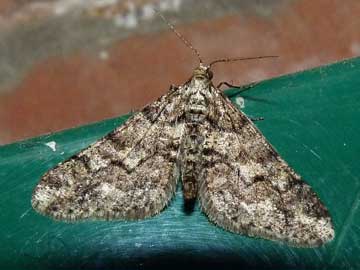
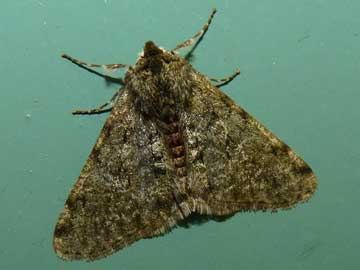
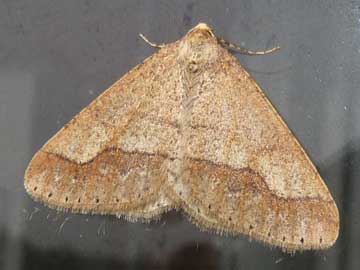
News for Tuesday 22 February: I went to do some work at Eridge station. The last time I was there was last May and there were loads of moths such as Pale Tussocks attracted to the station lights alighting within the commuter walkways and staircases. I was surprised in February to see 10 moths again perching around the station environment. These consisted of various forms of Spring Usher (top, left) but also I think a Pale Brindled (top, right) beauty and Dotted Border (bottom) and an unidentified Noctuid and a large plume moth. Who needs a moth trap. On a dog walk today I had a cursory glance for frog spawn in Henfield and failed, however at 6.45 whilst driving saw two frogs hopping across a local road no doubt on there way to a local garden pond, so long as they survived the number 17 bus passing the other way. Spring is here. Fantastic. (Richard Roebuck)
Tuesday 22 February 2011
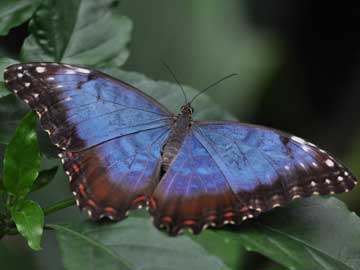
Yesterday we visited the tropical butterfly exhibit at Wisley RHS which is brilliant. Well worth a visit, though half term crowds meant queues before lunch. The exhibit has been extended to March 6. Links to my blog and others photos of the exhibit on www.seapic.com (Colin Knight)
Sunday 20 February 2011
Whilst walking in woods off Spithandle Lane found two male Spring Usher moths resting on a Goat willow trunk on sunday morning. Thanks to Steven Teale for the identification, TQ161153. (Richard Roebuck)
Friday 18 February 2011
Recent news: I spent Weds and Thursday afternoons surveying tetrad TQ 1608 for Brown Hairstreak eggs but had no joy.
My biggest challenge was being sure of the difference between Blackthorn and Hawthorn to be honest. During Spring, Summer and Autumn this is no problem but I don't find it particularly easy in winter.
I have come to some conclusions about distinguishing between the two:
a) red berries = hawthorn - that's the easy bit!
b) purple haze at top of expanse of bushes = blackthorn
c) lots of suckers = blackthorn.
d) Blackthorn has longer spines than Hawthorn
e) Also, check out this website for another distinguishing characteristic... www.hainaultforest.co.uk/5Hawthorn.htm and www.hainaultforest.co.uk/5Blackbhorn.htm. On this site it says that Hawthorn has spines on its main stems whereas Blackthorn doesn't.
With all this to help you'd think I'd be pretty sure about whether I was looking at Blackthorn or not but it's not always so clear cut in the field.
Anyways, I think I found but one blackthorn in the whole tetrad and no eggs on it. Where I wasn't sure whether the plant was Blackthorn or Hawthorn it got searched just in case which probably made my walk take a good deal longer than it need have done but what glorious weather to conduct BH egg searching in...it was wonderful. En route I saw bunnies, gulls, Yellowhammers, Reed Buntings and lots of new greenery appearing to assure me that Spring is already well under way. I know first sightings of butterflies have already been made, won't be long until we've all seen our first butterfly of the year :) (Sherie New)
PS If anyone has anything to correct in (or to add to) my account of distinguishing between Blackthorn and Hawthorn in winter please do. It will help for next winter's adventures.
Thursday 17 February 2011
I saw my first butterfly of the year - a Red Admiral - sunning itself in a clearing at the RSPB's Broadwater Warren nature reserve, near Tunbridge Wells. (Steve Wheatley)
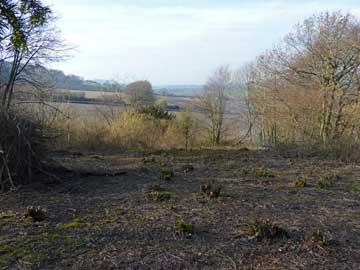
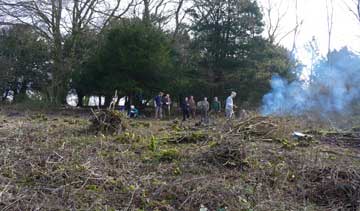
Today I joined a mix of Murray Downland Trust and BC volunteers to continue the habitat management work at Heyshott Escarpment. John & Trisha Murray, Naomi Barnett, Mike Edwards, Rowan Edwards, Mike Snelling, Roger Martin, Robin (Brinsbury College), Mike Hadley and our SE Regional Officer Dan Hoare worked hard to clear an area of overgrown coppice. This will create a habitat corridor which will hopefully encourage the movement of Duke of Burgundy from the higher levels of the reserve, down into the more heavily wooded areas. The next work party here is on 3rd March - all welcome. (Neil Hulme)
Monday 14 February 2011
I had one final hunt for Brown Hairstreak eggs today in the area to the south and south-west of Crawley. In 3 hours I found very little Blackthorn and only one egg, which was in Tetrad TQ2432. This was on an east-facing roadside plant at TQ259326 just south of Pease Pottage. I also completed my survey of tetrad TQ2832 and can confirm that this contains no Blackthorn whatsoever. Partial inspections of TQ2232 and TQ2630 revealed little or none of the plant or closely related species. (Vince Massimo)
Sunday 13 February 2011
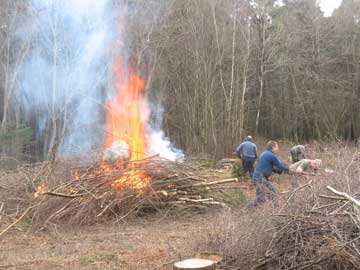
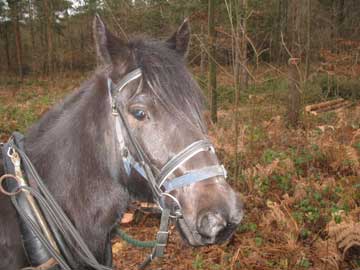
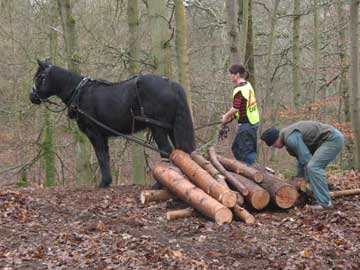
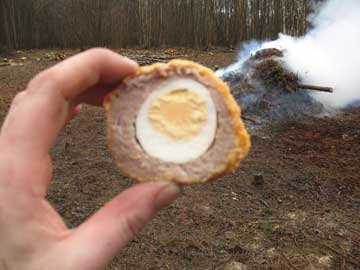
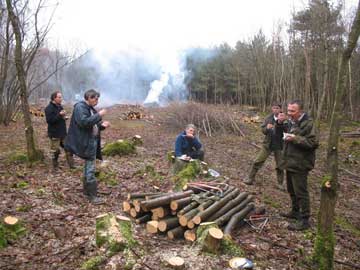
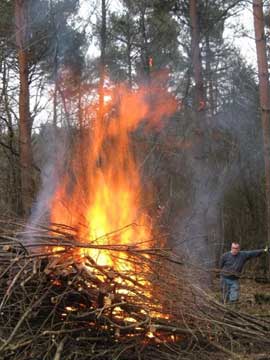
Thanks to everyone who joined me on a hastily re-arranged work party at Park Corner Heath today. A forestry team has been undertaking ride widening on our reserve this week under a grant supplied by the Forestry Commission. A lot of non-native pine has been removed and this has left us with piles of horrid conifer brash which needs to be cleared and burned. After fastidiously packing everything we needed for a bonfire (newspaper, kindling, paraffin, baking potatoes, tin foil, plates, knives, forks, butter, Jamie Oliver's Szechuan Chilli salt) I arrived at the reserve and realised that I had forgotten the matches. Thankyou to Peter Coyston for driving to the local garage for me to pick some up. The fire was soon roaring and the team got down to clearing the brash - it was quite a task. Just before lunch the sun came out and high in the blue sky were 15 circling Buzzards - they must have smelt the potatoes. Unlike last month we managed to retrieve the spuds from the fire - lovely! Thanks to all who attended; Dave Mitchell, Sherie New, Keith Alexander, Colin Knight, Nigel Kemp, Peter Atkinson, Susan Suleski, Peter Coyston, David Bradford & Jim Barrett.
...and for today (Sunday)
The heavy rain forecast for early on Sunday had not materialised but we started working on the reserve with one eye on the heavens. Despite the forecast I was joined on the reserve for the second time this weekend by another hard working team. The main task was to keep burning the brash and we soon had a great fire going. One member of the team, who will remain nameless, obviously had no faith in my new-found potato baking skills and had bought along some meat-based snacks courtesy of his wife, Sarah Roebuck. It has to be said the Scotch Eggs - from S K Hutchings Butchers - were the best Scotch Eggs I have ever tasted. Hopefully by promoting this butchers (located on the High Street in Partridge Green which offers customers a selection of meats including beef from its own herd, homemade pies, cold meats and cheeses) - will ensure we receive more high quality snacks at future work parties. But the real star of the show (aside from the Scotch Egg) was Jack the Horse, who with his owner Marie, helped by dragging logs out of the wood to be stacked. It was great to have a horse working with us in the wood. Jack was paid for his hard work in carrots - and the rest of the team were paid in baked potatoes. We've managed to clear a large area over the weekend - I think that when you visit here later in the year you will be amazed with the new habitat we have created. The rain finally turned up about 6 hours late - but was just in time to help us put the bonfire out. Thanks to all who attended today; Jack the Horse, Marie Buss, Bob Foreman, Richard Roebuck, Dave Harris, Dave Mitchell, Crispin Holloway, Colin Brinkhurst, Neil Hulme, Roger Carter, Tim Duffield and Alan Dengate (Michael Blencowe)
News for Tuesday 8 February: Male Brimstone seen last Tuesday at Coldwaltham (Ron Humphrey)
Saturday 12 February 2011
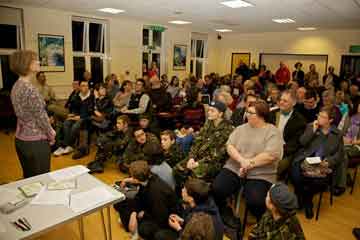
News for Thursday 10 February 2010: I joined a large group of locals at the Steyning Downland Scheme Open Evening on Thursday, where Richard Goring (Wiston Estate) and Bryony Webb (Scheme Co-ordinator) gave an overview of the project since its launch in 2007. We watched Pete Varkala's excellent short film showing some of the past SDS events, the beautiful landscape and the area's wildlife (including butterflies) - which demonstrated just how much has been achieved here. I said a few words on the ever improving situation for the Brown Hairstreak and other butterflies, which now justifies running walks here in both the spring and late summer of 2011. We have yet to see the best from this area and all involved with the project should feel proud of their achievements. Read more about the event here http://www.ukbutterflies.co.uk/phpBB/viewtopic.php?f=29&t=4065&start=280 (page base) and learn more about the Steyning Downland Scheme here http://www.steyningdownland.org/ I recommend watching Pete's short films (click on 'New Videos' - right of homepage), which include some lovely footage of butterflies, including Brown Hairstreaks. (Neil Hulme)
Wednesday 9 February 2011
News for Tuesday 8 February: Visited Kingley Vale NNR in West Sussex yesterday (8th February 2011) to see the ancient yew forest. It was my first visit to this wonderful place but I was not expecting to see any butterflies. It was a beautiful sunny day with a cloudless sky.
However I saw a male Brimstone at about midday which was first seen flitting around on some scrub on the south eastern boundary of the reserve (823106) and later pitched onto one of the Natural England nature trail markers. Just ten minutes later, having walked further up the slope on the eastern side of the reserve, I saw a Peacock flying around in a grassy "ride" within a younger section of the yew forest. The latter eventually landed on a chalky path with its wings wide open.
I am planning to see all 59 of Britain's native butterflies during this season, however, I had not expected to see any butterflies before March and Kingley Vale was not included in my itinerary for the quest. (Richard Stone)
Tuesday 8 February 2011
Later than usual first sighting this year TN39 4SR Bexhill, Little Common yellow Brimstone. (Wendy Rogers, Chairman Little Common Hort Soc)
2 Red Admirals in flight around the garden today. (Derek Lee)
I had an unsuccessful hunt for Brown Hairstreak eggs at lunchtime today around East Chiltington, Middle Home Wood near South Chailey and at Romany Ridge on Chailey Common (where there isn't much Blackthorn). Perhaps this is a little too far east for the butterfly? I was half hoping to see a butterfly or two in the warm sunshine, but had to make do with sightings of Tortricodes alternella in a couple of places and a few 7-spot Ladybirds, bumblebees, wasps and a nice view of a Nuthatch, which is a rare sighting for us Downsmen! (Steven Teale)
Monday 7 February 2011
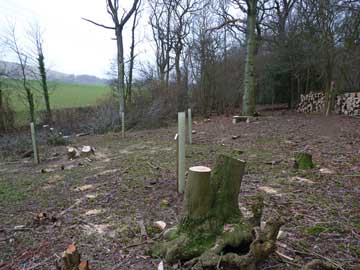
Recent News: Last Friday I met up with Tom Ottley and Steyning Downland Scheme members Dave Buckett and Pete Varkala, to plant the last of our disease-resistant elm cultivars in private woodland owned by Pete and partner Sally. Hopefully these will provide homes for hairstreaks in years to come - and we may plant more elsewhere in the future. 'Thank you' to all that have been involved, and especially to Tom who acted as project co-ordinator. I hope to see many of you at Rowland Wood on Sunday - it would be nice to recognise the efforts of Michael and 'the regulars' by swelling the ranks to break the record for attendance numbers at a BC work party. Of course Jack the Horse counts as at least one. (Neil Hulme)
Sunday 6 February 2011
Today I ventured out to look for Brown Hairstreak eggs pretty confident that I would see some as Richard Roebuck had agreed to come with me and give me a few tips on spotting them;) I'd missed the 'How to find Brown Hairstreak eggs' meeting in December and wasn't terribly confident of my own search skills. This lack of confidence was inspired at least in part by my inability to find any signs of Brown Hairstreak activity in a huge stretch of blackthorn on the Steyning/Beeding Levels which I'd already searched in both winter and summer.
Our trip started out well, just 30mins or so on the South Downs Link in Henfield produced around 22 eggs which we thought must rival Steyning Rifle Range in terms of numbers of eggs per metre. Following on from this we went to the Steyning/Beeding levels and investigated the dense stands of Blackthorn hedging there. There was a *lot* of blackthorn there but this seemed to make it harder to spot eggs, not easier. We found 7 eggs in one relatively sheltered spot (it is often pretty windy in this area) and one egg on another row of blackthorn but it was like looking for a needle in a haystack. We also found 3 Blue-bordered Carpet eggs. (Richard pointed out that it is unusual to find a single Blue-Bordered Carpet egg as they are usually laid in pairs). Our next location, tetrad 1812, was further up the Adur Valley (past the Sewage Works). It was virgin territory in terms of spotting Brown Hairstreaks for the Altas so we were delighted to find two eggs on blackthorn suckers on the sides of the road in fairly short order. This same tetrad came up trumps with Blue-Bordered Carpet eggs as well.
A rough reckoning makes our tally over 30 Brown Hairstreak eggs in quite a small geographical area and all found in the course of a short morning ramble. To be fair, Richard must have found 6 or more eggs to every egg I found but hey, we all have to start somewhere! My thanks to Richard for his helpful tips on how to find them. (Sherie New)
We took a stroll around Woods Mill tonight to see what moths were out and about. Walking through the woods we found a small clearing with 12 male Spring Usher flying around, possibly suggestive of a female moth in the area. Nearby we found a Satellite moth resting on an interpretation board, and along the edge of one of the meadows six Dotted Border were resting on the Blackthorn. We also found single Early Moth, Winter Moth, Tortricodes alternella and two Agonopterix heracliana bringing the species count to seven. (Dave and Pen Green)
The most easterly Brown Hairstreak egg to date (below), Streat, Richard Black, Sunday 30 January.
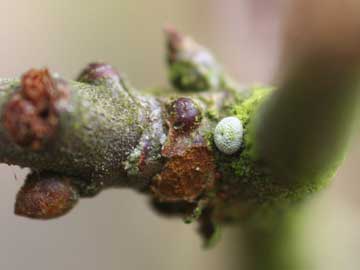
Friday 4 February 2011
All quiet on the Eastern front. Martin Kalaher and I spent a muddy and blustery day on Friday trying to move the Eastern Front of the Brown Hairtstreak distribution map a few kilometres closer to my house. After meeting Martin at Plumpton station we checked the blackthorn along the edge of the adjacent football pitch and found 3 eggs (TQ3616). In a field south of the Racecourse we soon found another (TQ3614). I was thrilled by our success and estimated that, at this rate, we'd reach my house in Friston by 4pm. However, despite our best efforts we just could not find any eggs further to the east despite extensive searching in suitable habitat. These two tetrads are the most eastern of the 226 Brown Hairstreak tetrads we have discovered so far - but have we found the eastern limit to Brown Hairstreak distribution in Sussex? (Martin Kalaher & Michael Blencowe)
News for Thursday 3 February: The weather forecast today was perfect for Brown Hairstreak egg hunting, so I set off to check the tetrads to the south and south-west of Crawley. First stop was TQ2834, half of which comprises Tilgate Forest, where there is absolutely no Blackthorn. I finally located a few isolated plants in a very sheltered spot on the edge of a playing field at TQ288359, where there were 3 eggs (1 north-facing and 2 east-facing). There was then a 2 hour sightings gap. I found no Blackthorn in the adjoining tetrad to the south (TQ2832) so I think this will remain blank. Blackthorn was almost non-existent in the next tetrad, TQ2632, right up until the western edge (near Pease Pottage), where, 50m from the boundary, I finally located a single egg on an east-facing roadside plant (TQ2605 3275).
I then moved the car to Buchan Country Park in order to search some adjoining tetrads. I had previously filled tetrad TQ2434 which covers the northern part of the park, but had a quick look around anyway. Not far from the car park I found a large sunny clump of Blackthorn on the Target Hill Nature Reserve which held numerous eggs. This is by the small pond at TQ247346. While still en-route to my next site I found another egg on a south-facing roadside plant at TQ241347 near the roundabout where the A2220 meets the A264. Predictably, as soon as I moved into my target tetrad TQ2234, all the Blackthorn disappeared. It took 30 minutes to locate a south-facing clump on the old landfill site near Bewbush Brook at TQ239356 where I found a pair of eggs on a sucker.
By now I had been searching for 5 hours and was beginning to tire, so I decided to head towards Horsham for some easy hits which would involve little or no walking. Until now TQ1632 had remained surprisingly blank. This is the tetrad which contains the Warnham Nature Centre, where adult Brown Hairstreaks have regularly been seen in the past. A pair of north-facing eggs was quickly located on the southern side of the car park at TQ168323, opposite the big Plane tree. It is possible to see these without getting out of the car. I then just had time to quickly dash into the adjoining tetrad to the south (TQ1630), where there was lots of Blackthorn. As soon as I was sure that I had crossed the boundary, I checked a south-facing clump by the bridge at the Rookwood Farm Golf Course (TQ165319), where I located an egg straight away.
Eggs still seem easy to find once I have located Blackthorn, but the plant now seems to be getting scarce in my remaining local tetrads. I have to remind myself sometimes that in order to establish the distribution limits of the butterfly, not finding an egg is also a result. (Vince Massimo)
Wednesday 2 February 2011
The area around Littlington to Alfriston, where last year there were plenty of White Letter Hairstreaks, has seen unfortunately an increase in the dreaded dutch elm disease. Several trees have been dealt with near Drusillas Zoo but at the moment the trees where the butterflies last year were very photogenic have not been touched. However, last year there were signs of some diseased trees in that area as well so it may be only a matter of time before these start to be felled. It would be good if some disease resistant trees could be planted around here so they get established for when the mature trees do go. (Bob Eade)
Recent news: Clare and I ran a stall at the Sussex Ornithological Conference on Saturday - it was good to see many of our members and atlas recorders there - and congrats to Penny and Dave Green; they received the President's Award for their work on recording elusive species. Speaking of which, I did some recruitment for our Brown Hairstreak survey. Rich and Ruth Black were keen to join the search for Hairstreak eggs and took a copy of our 'How to... guide (available from the link above). On Sunday they emailed me to say that they had located four eggs on the south side of a blackthorn hedge at Streat (near Plumpton, Tetrad TQ3414). This is a fantastic discovery as it is our most easterly record so far - and only the third tetrad (out of 210) that we have in East Sussex! (Michael Blencowe)
Also... I was speaking to Dan Hoare (BC's Southeast Regional Officer) on the 'phone today and when he mentioned he was currently on a site visit near Plaistow I quickly texted him some blank Brown Hairstreak squares. It wasn't long before I received a text back with two more Hairstreak squares in the bag - SU9430 and SU9630 (Michael Blencowe)
Tuesday 1 February 2011
News for Sunday 30 January: On Sunday afternoon we disturbed a Red Admiral which was basking in the sun on the south facing front wall of our house in Sharpthorne. It flew off strongly. (Paul Clark)
Saturday 29 January 2011
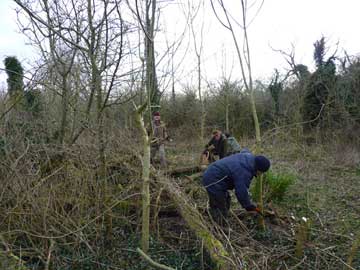
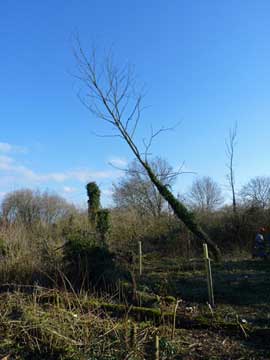
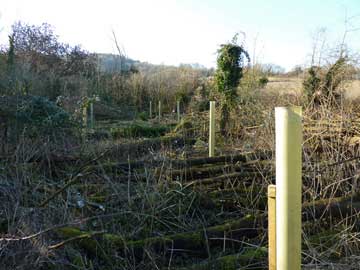
Recent news: Many thanks to Tom Ottley and Steyning Downland Scheme members Pete Varkala, Dave Buckett and Nigel Bowman for their hard graft at Steyning Rifle Range on Friday. The Sussex Branch donated 13 Dutch Elm Disease-resistant cultivars to the fabulous SDS project, where they will be in safe hands and hopefully, in time, become home to White-letter Hairstreaks. The sequence above shows before, during and after images. (Neil Hulme)
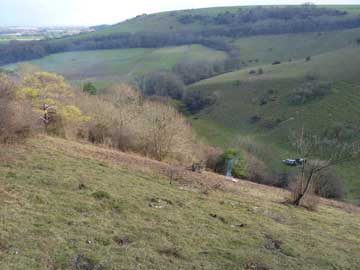
Recent news: Many thanks to Simon Mockford (South Downs Joint Committee) and his SDJC volunteer force, our own Dr Martin Kalaher, and contractor Mark Goulding and his crew, for several recent work parties to clear invasive scrub from the Downs at Chantry Hill (above). Much new butterfly habitat has been created. Also, a late report (from Wednesday 26 January) of a new Brown Hairstreak egg tetrad (TQ301239; TQ3022) between Ansty and Haywards Heath. I was rather pleased to have bagged TQ2822 and TQ3024, only to find Richard Roebuck's footprints in the mud! (Neil Hulme)
Friday 28 January 2011
I spent the day walking the lanes and footpaths near Gatwick, but being careful to stay within the Sussex survey area. First stop was tetrad TQ2236 where I easily located two [Brown Hairstreak] eggs on a public footpath which ran along the northern boundary of the Ifield Golf and Country Club (TQ239369). Another egg was found when I checked a hedgerow at TQ232370. After moving north to tetrad TQ2238, it took an hour and a quarter of diligent searching to achieve the next sighting. The reward was six eggs on an isolated sprig of Blackthorn in a roadside hedge at TQ224382. One egg had a large ragged hole in it's centre indicating that it had been parasitized. All of the eggs so far had been found on south-facing locations. The final tetrad, TQ2038, only contained a narrow strip of Sussex land to be surveyed, and after an hour here I drew a blank after searching all the available sunlit plants. In desperation I checked a roadside sprig with a shady north-easterly aspect and surprisingly found an egg straight away. This was at TQ216387 which is about 75 metres from the boundary with Surrey. At that point I also realised that I was 3 miles from where I had parked the car.
I believe there is still potential to fill more tetrads in the surrounding area. (Vince Massimo)
Tuesday 25 January 2011
No new Brown Hairstreak tetrads today but I did find a fascinating article in The New York Times... (not exactly Sussex - I know!)
http://www.nytimes.com/2011/02/01/science/01butterfly.html?src=ISMR_HP_LO_MST_FB
Monday 24 January 2011
I found Brown Hairstreak eggs in the Petworth-Easebourne area in four new tetrads, SU991236, SU904232, SU897233 and SU976224. Also a new tetrad, north of Thakeham at TQ116204. (Martin Kalaher)
Sunday 23 January 2011
Astounding News...
I spent the day with Richard Roebuck cruising around the county on our mission to exploare new habitats and seek out Brown Hairstreak eggs. We were off to a flying start but we again hit the badlands around Warninglid and drew a blank - this area seems to be devoid of blackthorn and hairstreaks and as we headed further east we found the landscape and habitat provide a barrier to the hairstreak's distribution. We spent hours on the east of the 'blackthorn curtain' and found nothing. When we crossed back to the west it was a whole new world - we were finding eggs within seconds of getting out of the car. In the end we managed to make it to 10 squares today - including a site just north of Horsham which has the potential to be one of the best Hairstreak sites in Sussex. I returned home to find an email from Vince and realised that we have now reached the 200 tetrad mark - an incredible achievement. Thankyou to everyone who has put so much effort into this survey - I'll be raising a glass of sloe gin tonight to celebrate (Michael Blencowe)
Following the slight confusion regarding the location of the Sussex boundary, Michael Blencowe subsequently provided me with a set of survey sheets for the area between Crawley and Gatwick. Included in this batch was tetrad TQ2836 (the Three Bridges and Pound Hill neighbourhoods of Crawley) and a message challenging me to find an egg there. I was out all day today and this was my first stop, not only because of the challenge, but to test a theory. I had noticed one of the footpaths in the area ran along the route of a disused railway line (from Three Bridges to East Grinstead), known as Worth Way. I thought that this could act as a corridor helping Brown Hairstreak to spread eastwards, but found no Blackthorn along the western end of the route. After 45 minutes I finally located some Blackthorn around the lake at TQ290363 and then found an egg straight away. I then checked the square to the north (TQ2838) for over an hour. The southern part of this (Grattons Park) was largely devoid of Blackthorn, leaving only the area around the crematorium to be checked at a later date.
Next stop was TQ2634 which, until recently, was my home tetrad. In past years I would get one or two Brown Hairstreaks visiting the garden each season. A few hundred metres from the old house, and just north of Broadfield Stadium, it took only 2 minutes to find 3 eggs on the same stem at the base of a flayed hedge at TQ264352 facing the all-weather pitch. Flushed with success and with time to spare, I visited the two tetrads at Langley Green on the north side of Crawley (TQ2638 and TQ2438) abutting the (correct) border with Surrey. One egg was soon located in a south facing hedge overlooking a playing field at TQ265387. In the final tetrad I was delighted to find another playing field surrounded by Blackthorn, but surprisingly it took over 20 minutes to locate a single egg on a sucker at TQ258387.
To date all of my sightings of eggs have been in south or west-facing locations. Playing field borders appear to be good places to look.
I am hopeful of adding further tetrads next week. (Vince Massimo)
Saturday 22 January 2011
Much useful work was started at Heyshott Down when 5 members of The Murray Downland Trust and 2 of us from Sussex BC turned up at a work party on Thursday. Simon Bassett, a new BC member currently on a Countryside management Course at Brinsbury College, arrived to spend the morning clearing and burning hazel coppice. The purpose is to clear a flyway so the Dukes and Duchesses of Burgundy can gain access to colonise new ground.
We only work from 0945 to lunchtime and the next date is February 3rd - anybody & everybody welcome. (Roger Martin)
After a non-productive Brown Hairstreak egg hunt at Lancing Ring and the downs behind Sompting I enlisted the help of Dave and Penny Green and headed into the Hairstreak heartland north of Pulborough. There aren't many tetrads left here that don't have a Brown Hairstreak record in them so today's exercise was to fill in some gaps. After a tour of some lovely Hairstreak habitat (and Billingshurst Waste Recycling Depot) we were able to add seven new tetrads to the list. Thanks to Dave and especially Penny who was crowned Hairstreak Queen after finding most of todays eggs. We're now sailing towards the 200 tetrad mark - if you'd like to get involved in this survey see our guide to finding eggs (link above) and contact me if you want to target a new area (Michael Blencowe, Dave Green, Penny Green)
Thursday 20 January 2011
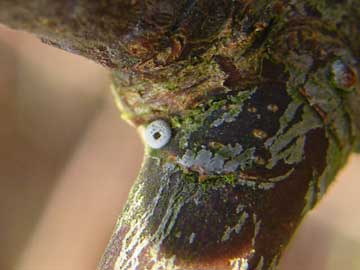
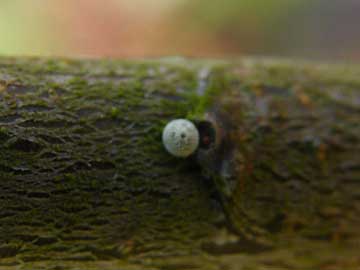
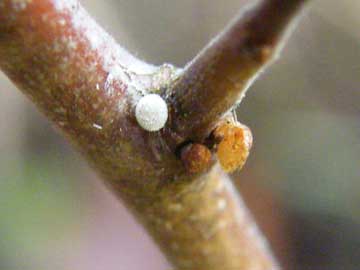
Recent News: Phil Haskell and I went out Brown Hairstreak egg hunting on Sunday (16th January) and found more Brown Hairstreak eggs in Blunts Wood and Paiges Meadow LNR, (ref TQ318245), this time in Paiges Barn Meadow and Coltsfoot Meadow, in addition to finding another site in South Meadow.
This week Phil went to the Millennium Wood, which is north of Blunts Wood and Paiges Meadow LNR, and has found some Brown Hairstreak eggs there too.
One of the eggs, according to Neil Hulme, has been parasitised by a Trichogramma sp. wasp (photo top, left). (Barbara Woods)
Wednesday 19 January 2011
I went for a long tramp over the downs between Washington and Findon, west of the A24. Almost 4 hours later and on the point of giving up I found a single Brown Hairstreak egg on the southern edge of Coventry Plantation at TQ115092. On my way back to Chantry Post I knew I had Highden Beeches to check and sure enough there was a nice clump of young Blackthorn at the SW edge where there were two Brown Hairstreak eggs at TQ104112. Of interest, all 3 eggs were at 5 foot 3 inches (or thereabouts). I mention this as browsing Roe Deer have a significant effect on all the vegetation in these parts. Off for a brief look at Abbot's Wood tomorrow. (Martin Kalaher)
Tuesday 18 January 2011
Neil Hulme and Vince Massimo contacted me as they thought I had missed a Brown Hairstreak sighting which was reported to the website last August. Neil's sighting of 4 adult butterflies on August 3rd at Povey Cross near Gatwick Airport was dangerously close to the Surrey border - but definitely on the Sussex side. However, like other biological recording groups we are using the Watsonian Vice-county boundaries for our atlas. These boundaries, based on the ancient counties of Britain, have been historically used by naturalists since they were introduced by Hewett Cottrell Watson in 1852. They provide a stable basis for recording using similarly-sized units, and, although grid-based reporting has grown in popularity, they remain a standard in the vast majority of ecological surveys, allowing data collected over long periods of time to be compared easily. The Watsonian boundary is in line with the modern Surrey / Sussex boundary in most cases but in the Povey Cross area there is a major divergence. Vince notes that the "change in the county boundary took place in 1974 when Sussex annexed some prime Brown Hairstreak habitat from Surrey (oh... and an airport)" - and therefore, in my role as umpire (and hopefully without inspiring a John McEnroe tantrum from Mr Hulme) - I declare his Hairsteaks are definitely 'out' of our Watsonian atlas area. We may have lost this record to Surrey but Susie Milbank was quick to get one in the bag for Sussex - inspired by Vince's records from a few days ago she searched the area north of Kingsfold this afternoon for blackthorn and at TQ1714837548 - which according to my map is 6cm on this side on the border - she found an egg (see her report below). Good work Mrs Milbank. (Michael Blencowe)
Response from Neil Hulme: You cannot be serious. You cannot be serious man. That Brown Hairstreak was on the line. Everyone saw the hairstreak fly up. How can you possibly call that out?
Following Vince's finds last Thursday I thought I would try to find the most northerly Brown Hairstreak egg and located one today north of Kingsfold on the Sussex border path near the A24. Can anyone beat this? (Susie Milbank)
I spent a couple of hours looking for Brown Hairstreak eggs in the South Stoke/mid Arundel Park area without any success. There does not seem to be much Blackthorn in that area. Just north of Warningcamp I found two eggs on quite a nice strip of Blackthorn hedgerow at TQ034074. I am fairly confident that TQ0208 and TQ0408 can be crossed out. (Martin Kalaher)
Monday 17 January 2011
News for 16 November 2010: (better late than never...) I sighted a male Brimstone butterfly feeding on ivy blossom in Cuckfield, West Sussex. (Tim Newnham)
Sunday 16 January 2011
We held an extra work party at Rowland Wood today - cutting and clearing more trees to open up some of the rides in the wood. Aside from the busy volunteers the wood was alive with wildlife - lots of active Tit flocks in the trees, the return of the Raven, a flushed Woodcock and our Kingfisher (which annoyed me by choosing not to land on the posts I had provided for it last week). The sunshine also brought out the first bumblebee and hoverfly of the year. I also managed to unearth my missing jacket potatoes from the ashes of last week's fire - possibly slightly overdone. On the way home I found 7 Waxwings feeding at Polegate roundabout. No butterflies yet but still a good day. Thankyou to all who attended; Dave Mitchell, Graham Parris, Nigel Kemp, Dave Harris, Susan Suleski, Anna Grist, Peter Coyston, Dave Bradford, Colin Knight, Peter Atkinson, Keith Alexander, John Luck and Andrew Burns. (Michael Blencowe)
Today I saw a Red Admiral flutting down my drive in Shoreham-By-Sea. (Ellie Corrigan - aged 11)
We utilised our refined method of winter moth trapping again last night (one of us driving along slowly down a country lane, whilst the other runs alongside with a net) to see what we could discover between Burton Mill Pond and Horsham. We found around twenty Winter Moth along our countryside route and at Wiggonholt Common we encountered a couple of Mottled Umber. (Dave and Pen Green)
A Red Admiral in my garden in Southwick early afternoon today. (Bridget James)
I found five Brown Hairstreak Eggs in Rudgwick today on a south-facing hedgerow. The eggs were all on Blackthorn suckers up to about four feet from the ground. I didn't have the opportunity to carry out a thorough search, so there may well be more there. (Robin Bassett)
Saturday 15 January 2011
I was able to get out for a few hours today and was joined by Friston transect walker Tom Timberlake for a Brown Hairstreak inspired jaunt around West Sussex. Our first stop south of Monk's Gate made it all look too easy - within seconds we found a blackthorn sucker with 4 Brown Hairstreak eggs on it. The next few tetrads around Crabtree and Nuthurst were all easy too. After lunch however things became a bit more challenging - we couldn't even find any blackthorn! Luckily a couple of squares around Staplefield put us back on track and we found both blackthorn and eggs. Five more tetrads for the ever expanding Brown Hairstreak map - we're now on over 170 tetrads for this elusive species in Sussex. (Michael Blencowe & Tom Timberlake)
Thursday 13 January 2011
The last time I saw the Brown Hairstreak survey grid (on 14th December 2010) the most northerly sighting was in tetrad TQ2436, which is the Ifield hot-spot west of Crawley and just south of Gatwick. Before I moved away from Crawley I visited Ifield regularly during the Brown Hairstreak season but also noted adults in three of the adjacent tetrads. However this was all prior to the start of the present survey period. I surveyed all of these today, using my local knowledge, and can now add two more tetrads to the grid.
I found a single egg at TQ259356 (edge of grass verge on the eastern side of "Cheals Roundabout" where the A2220 meets the A23). Then a further two eggs at TQ276362 (western edge of woodland at "The Hawth", facing the playing field). All of the eggs shone like little pearls even on this dull, drizzly afternoon. I was particularly pleased with the latter pair of eggs because they fell within the tetrad which covers the Crawley Town Centre. I drew a blank in the third tetrad because my target hedge had been flailed.
Given the concentration of adults in the Ifield tetrad, it is almost certain that egg records can be found in all of the surrounding tetrads and beyond and certainly up to the Surrey border. As yet this area remains largely unsurveyed, although last week I walked the area to the north and west where the corners of 3 adjacent tetrads meet (TQ2236, TQ2238 and TQ2438), but found mainly open fields and very little Blackthorn. Hopefully there will be more sightings to report when I next visit Crawley. (Vince Massimo)
Tuesday 11 January 2011
Three new tetrads on Saturday and another two today, all in the far west. I found an extensive patch of Blackthorn by a footpath between Nyewood and East Harting. Considering the amount of food plant available I was surprised to find only one [Brown Hairstreak] egg at SU 795204. Then off to the East Harting area where there was a single BH egg on a sucker to the side of Telegraph Lane, SU801192. Then a look at the foothills of Harting Downs where there was an egg at SU793186.
Today, I can say we have definitely reached the Hampshire border with two eggs to the south of Nursted at SU765205. This site is just 400 metres from the Sussex/Hants border. Then to the East Marden area where there was a BH egg along the edge of woodland at SU806153. I was out all day but drew a blank elsewhere. (Martin Kalaher)
Monday 10 January 2011
I just knew I'd left someone off the 'thankyou' list for yesterday's work party. So thanks also to Sherie New for helping out in Rowland Wood (she threatened that she would spray "Sherie wuz 'ere" on a tree in fluorescent paint so I didn't forget next time!) (Michael Blencowe)
News for Sunday 9 January: I was delighted to find my first flying butterfly of the year in the shape of a Peacock flying briefly and then basking in sunshine on the shingle ridge between the pools and the beach at Cuckmere Haven (TV518978). (Tony Moverley - Treasurer, Cambridgeshire & Essex Branch)
Sunday 9 January 2011
... and we're off and running - eight days earlier than last year's first Red Admiral sighting...
Red Admiral (male judging by its small size) seen at 1400 on the western end of Eastbourne sea front sunning itself on the stone wall beside the promenade and flying. It was a very sunny day and the rocks were warm to the touch. (Francis Ratnieks)
Rowland Wood, Sunday 9 January:
Top row, (below): left - photo by Catherine Tonge, right - by Vince Massimo
Middle row: photos by Neil Hulme (not "clickable")
Bottom row: photos by Michael Blencowe
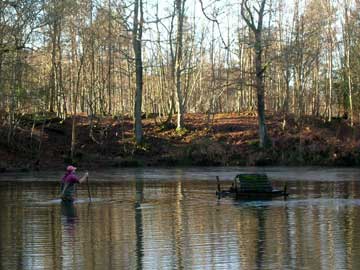
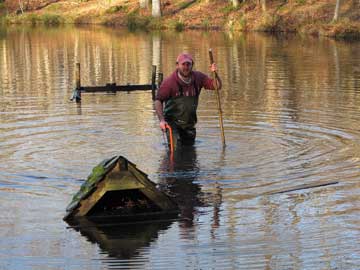
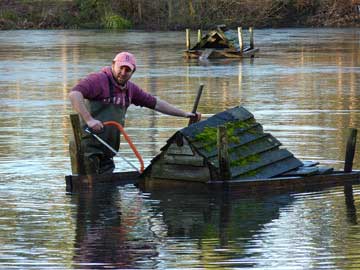
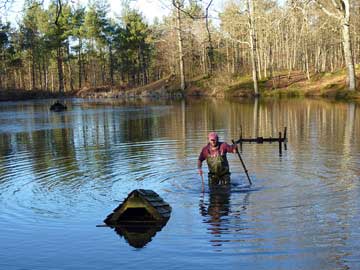
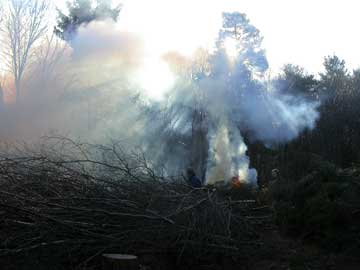
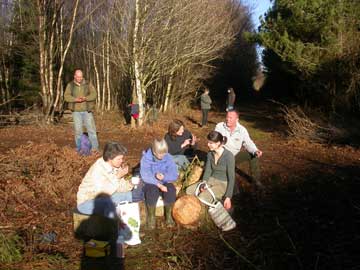
It was a frosty start to the first Park Corner Heath work party of the year - but part of our task was to burn some of the brash that had been created through ride widening work at the end of 2010. Our fire took a while to get going - but thanks to the firestarter skills of Richard Roebuck and Andy Stokes the flames started to rise - so much so that I popped ten Jacket Potatoes in the fire hoping for a lunchtime feast. Tom Ottley delivered and planted some disease-resistant elms on the reserve as part of a project by Sussex BC to create potential future White-letter Hairstreak habitat at a few sites in the county. Meanwhile the bonfire had really taken off - so much so that my neatly-wrapped tin-foiled potatoes were lost in the middle of the inferno - never to be seen again! Luckily Peter Atkinson had bought some back-up baked potatoes which were baked more sensibly at the edge of the fire. After lunch I took the plunge in Lake Rowland - bravely wading out to remove one of those duckhouses (but left behind some stumps for any passing Kingfishers). Back in the wood the team cleared away a whole lot of brash- while others helped widen another ride. A huge thankyou to everyone who turned up to the work party today - (hopefully I haven't forgotten anyone!) - Clare Jeffers, Roy Wells, Catherine Tonge, Dave Bradford, Dave Mitchell, Dave Harris, Neil Hulme, Nikki Kent, Andrew Burns, Tom Ottley, Nigel Kemp, Carol Kemp, Ree Buss, Anna Grist, Susan Suleski, Roger Carter, Keith Alexander, John Luck, Peter Atkinson, Peter Coyston, Richard Roebuck, Colin Brinkhurst and Andy Stokes. Quite a crowd - it's a good thing we bought an extra nature reserve! A special mention to Vince Massimo for driving down from Surrey - and to Mark Bunch for driving down to join us today from Essex! Like many people Mark visits the reserve each year in the spring/summer but wanted to take time out over the winter to 'give something back'. At the end of the day Clare and I watched the fire die down as the sun set and finished off Peter's baked potatoes for supper - I wonder if mine will ever show up? Thanks again to all - (Michael Blencowe)
Saturday 8 January 2011
I was roped into helping a neighbour move a sofa downstairs today - my reward for 45 minutes of straining, heaving and complaining was the discovery of a Small Tortoiseshell hibernating underneath their sofa (Michael Blencowe)
After some quite horrible weather finally got out to look for more Brown Hairstreak eggs. Went to get a picture developed of Female Brown Hairstreak at Park Cameras, Burgess Hill and whilst I was there checked out a patch of sloes next door where I found 8 eggs one was 5½ feet off the ground. TQ295188. Across the roundabout is the Burgess Hill Memorial Ground and on a hedgerow next to the car park found another four eggs TQ294188. Went further down the road and found 3 eggs on the north side of Malthouse lane TQ293193. I think this leads up to a nature reserve this whole area west of Burgess Hill is good for sloes. Found two eggs on sloes next to a busy roundabout TQ285205. Then off towards Ansty up the Cuckfield road, found 3 eggs on sloes up a farm track/foot-path next to some trees TQ290226. Doubled back towards the A23. Slight detour to Goddard's green next to the Sportsman, a road is disused here and the sloes have grown across one side of the road and never been cut, found 5 eggs quite easily TQ283202, Found pair of Blue-bordered Carpet eggs and 4 Brown Hairstreak eggs opposite Texaco garage on the main Burgess Hill turn-off A2300, TQ270203. Then off towards Sayers Common. After a grim start trying to find any decent sloes eventually found a footpath in to a disused field and found Blue-bordered Carpet eggs and two Brown Hairstreak eggs TQ266178. Getting weary now, one last stop at Firsland industrial estate near Albourne. There was a style next to the steel entrance gates and a little sort of nature area with seats. I found a single slow about 3 feet high with a single egg on it TQ248178. All in all that was 32 Brown Hairstreak eggs and most I found quite quickly so the area to the West of Burgess hill is quite good for Brown Hairstreaks. Apologies if I have duplicated any tetrads, got a bit carried way with my spotting. Will be a bit better organised next time. (Richard Roebuck)
During an afternoon stroll with Hannah and my parents on the Angmering Park Estate, I just about avoided becoming 'a pain' by stopping off to search every likely looking stand of blackthorn. A single Brown Hairstreak egg at TQ050076 adds yet another tetrad to our Atlas map. There would be a lot more along the hedgerows here, were they not flailed so harshly every year. (Neil Hulme)
Thursday 6 January 2011
Found a Brown Hairstreak egg today while searching a blackthorn on a footbridge over the A23 near Hurstpierpoint (Tetrad TQ2616). Next time you're speeding down the A23 in late summer keep an eye on the sky for passing hairstreaks (Michael Blencowe)
Wednesday 5 January 2011
Identification correction: Richard Roebuck contacted the site to express his uncertainty over his Spurge Hawkmoth photo from Lanzarote. We now think that it is most probably be a Barbary Spurge Hawkmoth, Hyles tithymali. (ed.)
Tuesday 4 January 2011
It's well worth checking outdoor fluorescent lights after mild nights at this time of year - I looked at three today and counted 8 Winter Moth. Even for a common species such as this, keeping and passing records onto our County Recorder can help improve our knowledge of species' distribution, so it's well worth the effort! (Steven Teale)
I had a very rewarding day with a further 5 tetrads in the far west of the County. Elsted Rough is rather a nice deciduous wood with a footpath running along the SE border. Not much Blackthorn but then eventually found a single egg that almost escaped me. Ten yards further along a nice easy one, approx 6 foot 3 inches up (my highest so far). SU827207. Then off to Brimbrook Lane (just south of Ingrams Green). Put my wellies on but checked the Blackthorn where I had parked the car and bingo. 60 seconds later a BH egg. SU841197. I then realised I was close to the 'tetrad line' so spent a fair time in and around Bimbrook Lane. The lane itself did not seem very promising with isolated Oak standards and very little scrub. I noticed there were a couple of Blackthorn 'hugging' one of the trees and then I realised there were scores of tiny Blackthorn suckers. 90 suckers later, a Brown Hairstreak egg. They do turn up in the most interesting places! SU838198. Headed back north to Ingram's green lane and found an excellent hedge and lots of Brown Hairstreak eggs. SU843204. Then to Bepton where it took some little while to find a suitable hedge but once again a nice hedge (sympathetically cut!). A record at SU862187. Went to Heyshott. Had 2 Red Kites and some nice Blackthorn, but time was running out and it started to spit with rain. An excellent day. (Martin Kalaher)
Recent news: Some late (or early?) butterfly caterpillars, Newhaven. 21st December Small White; 3rd January Large White. Both on Sea Radish on sheltered South facing slope. 3 Red Admiral 2nd January all about 5mm in length nestled in the centre of remaining green at tip of old nettles. Hopefully all will have a happy 2011! (Dave Harris)
Monday 3 January 2011
Mill Hill Surveyors: Many thanks to Colin Knight (Butterfly Transect) and Penny & Dave Green (Barred Tooth-striped Moth survey) for stepping up to the mark. These positions are now filled. (Neil Hulme)

2010 closed with a New Year's Eve leisurely drive around West Sussex looking for Brown Hairstreak eggs in the Petworth area. Eggs were found relatively easily in 10 tetrads - although I couldn't even find Blackthorn in two squares near Little Bognor. To make finding eggs on New Years Day more of a challenge I decided to drink a load of tequila during the previous evening. My head may have been pounding but my eyesight was unaffected and eggs were found in 6 tetrads around Slinfold and Rusper in the north of the county. Today (Jan 3rd) I searched in tetrads around Cooksbridge - an area I'm predicting will be at the eastern edge of this species range in Sussex. I didn't find any eggs. I was hoping we'd cover 50 tetrads for Brown Hairstreak by the end of 2010 - we now have almost 150 !! There will be full details of our findings in the 2010 annual report in the Spring. Happy New Year to all. (Michael Blencowe)
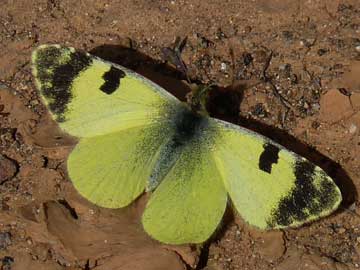
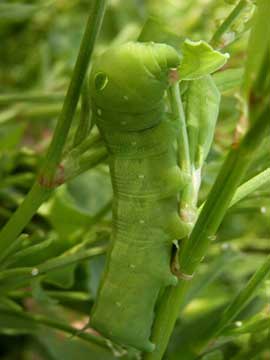
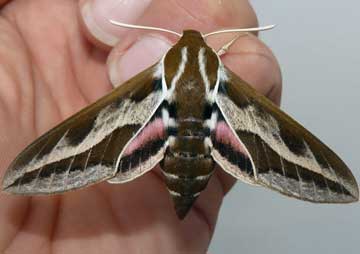
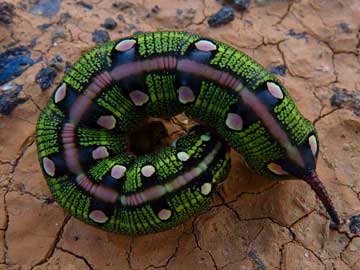
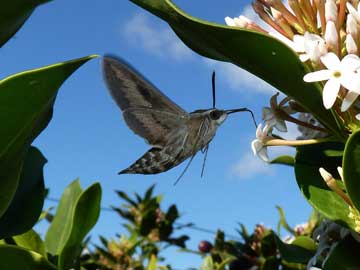
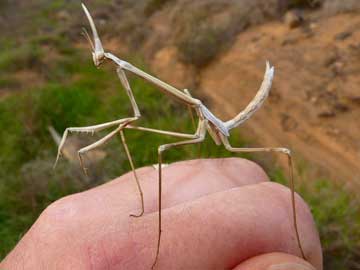
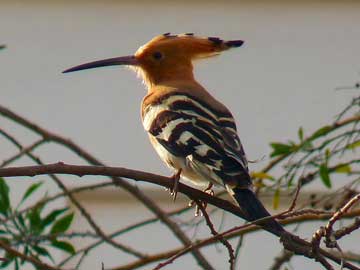
She who must be obeyed decided that an after Christmas break somewhere warm was desperately required. We couldn't get a flight to Four-cans-of-tuna (Fuerteventura) so instead settled for Lazarote. Oh god I thought? On arrival at said hotel complex where Union Jack shorts seemed de rigueur and where Christmas decorations on palm trees seemed a bit surreal, wildlife seemed a bit disappointing with just cats, sparrows and collard doves. However I thought things were looking up when the kids kept bringing me back large American Cockroaches... hmmm? Anyway after a couple of days I located a dried up stream or run off from the lava fields close by which seemed to also double up for the sewer overflow judging by the aromas. At least there were green patches and flowers. Actually I struck gold here, as I spent every opportunity here and clocked up nine species of butterfly. Geranium Bronze, African Grass Blue, Common Blue, Clouded Yellow, Red Admiral, Painted Lady, Greenish Black Tip, Euchloe charlonia (top left), emigrant Catopsilolia florella and Large White . But the best things were the hawk moth caterpillars I found, at least 20 of the biggest (4 inch), green, fantastically camouflaged caterpillars I have ever seen which may be the Vine Hawkmoth or Silver-striped Hawkmoth (top right) followed by about 15 Spurge Hawkmoth caterpillars both of which showed variation in both the early and later instars. The Spurge Hawkmoth (2nd row left) was a weird beastie I had seen in books but the reality was fab and has got to be in the top ten of most beautiful caterpillars (2nd row right). Also managed a pic of a nectaring hawk moth on what appeared to be a flowering virburnam. For those technically minded i.e "F stops and ISOs?" I got this shot on outdoor sport mode with forced flash (3rd row left). Also found fab spiders and the weirdest, for want of a name, "Grass praying Mantids" (3rd row right) (with vestigial wings) and lastly I am not a bird spotter but seeing a Hoopoe for the first time was definitely worth a Pic (bottom). To top all this, I did a bit of Diving off underwater lava cliffs where I saw for the first time five amazing squid and several Angel sharks. The tour of the volcanoes was great and so was the go-karting and bingo? - so all in all I came to like Lazarote, warm, relaxing and full of cacti. It's exactly what is says on the tin, totally unpretentious and full of fun. (Richard Roebuck)